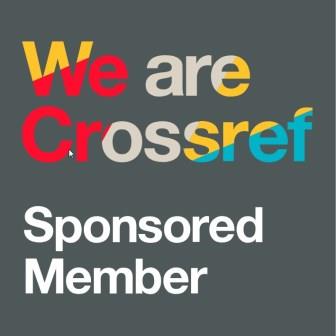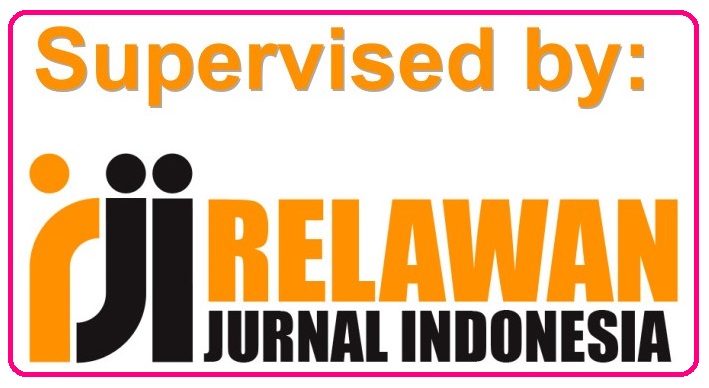The Logical Pattern of Argument: A Case Study of National University Debating Championship
DOI:
https://doi.org/10.31849/elsya.v4i1.8466Keywords:
Argumentation, Linguistic, Logical Reasons, Political Debate, SchemeAbstract
In academic field, argument is an essential factor of understanding statements. In this regard, the present paper aims to analyse National University Debate Contest (NUDC) 2016 using Toulmin model argumentative structure and its relation with the implied meaning from National University Debate Contest. This paper employs descriptive qualitative analysis to examine the logical pattern of arguments through linguistic expressions that occurred in the debate. The data were taken from NUDC in Mercu Buana University focusing on (part 1) the statement of the government proponent (Bina Nusantara University) and the opposite speaker (Brawijaya University). The data were analysed using the Toulmin model of logical argument. The findings showed that the government opposite speaker very often made the rebuttal claim by showing the weaknesses from the government side; while the government proponent speaker has claimed almost in every pattern of argument proposed by Toulmin model. The paper concludes that both speakers’ patterns of argument have utilized Toulmin model such as claims, data, qualifiers, rebutting conditions, and warrants. Even though there are so many grammatical mistake and unwell-organized structure, but the logical structure can be analysed using Toulmin model.
References
Applebee, A., Langer, J., Nystrand, M., & Gamoran (2003). Discussion-based approaches to developing understanding: classroom instruction and student performance in middle and high school english. American Educational Research Journal, 40: 685–730.
Becker, M. (2016). Argumentative texts and clause types. Science Direct, 38: 444-456. doi: 10.1016.2010.06.012
Bernat, F. X. M., Ferrandis, I. G., & Gómez, J. G. (2019). Competencias para mejorar la argumentacióny la toma de decisiones sobre conservación de la biodiversidad. [Competencies to improve argumentation and decision-making on biodiversity conservation]. Enseñanza de las Ciencias, 37, 55-70. doi: 10.5565/rev/ensciencias.2323
Bracewell, R. & Breuleux, A. (1994). Substance and romance in analyzing think-aloud protocols. In: Smagorinsky, P. (Ed.), Speaking about writing: reflections on research methodology. Sage, Thousand Oaks, CA, pp. 55-88.
Cahyono, B. B. (2016). Rhetorical strategies used in indonesian persuasive essays written by students majoring in indonesian and in english. Jurnal Ilmu Pendidikan, 7: 13-57.
Chin, C. & Osborne, J. (2010). Supporting argumentation through students' questions: case studies in science classrooms. Journal of the Learning Sciences, 19: 230-284
Crammond, J. (1998). The uses and complexity of argument structures in expert and student persuasive writing. Written Communication 15: 230-268.
Pérez, B. C., & Aleixandre, M. P. J. (2015). Desafíos planteados por las actividades abiertas de indagación en el laboratorio: articulación de conocimientos teóricos y prácticos en las prácticas científicas [Challenges posed by open inquiry tasks in the laboratory: articulation of theoretical and practical knowledge in scientific practices]. Enseñanza de las Ciencias, 33, 63-84. doi: 10.5565/rev/ensciencias.1469
Eemeren, F. & Grootendorst, R. (2004). A systematic theory of argumentation: the pragma-dialectical approach. New York: Cambridge University Press.
Eemeren, F. H., Henkemans, F. S. & Houtlosser, P. (2007). Argumentative indicators in discourse: a pragma-dialectical study. Dordrecht: Springer.
Erduran, S., Simon, S., & Osborne, J. (2004). TAPping into argumentation: Developments in the application of Toulmin's argument pattern for studying science discourse. Science Education, 88, 915-933. doi: 10.1002/sce.20012
Erduran, S., Guilfoyle, L., Park, W., Chan, J. & Fancourt, N. (2019). Argumentation and interdisciplinarity: reflections from the Oxford Argumentation in Religion and Science Project. Disciplinary and Interdisciplinary Science Education Research. 1: 1-10, https://doi.org/10.1186/s43031-019-0006-9
Merala, E., Namlıb, Z. B. & Kayaalp, F. (2021). The effect of argumentation-based teaching on developing argument skills of prospective teachers, and on their willingness to debate. International Journal of Curriculum and Instruction 13(2), 1039-1062
Ellis, L. (2015). A Critique of the Ubiquity of the Toulmin Model in Argumentative Writing Instruction in the U.S.A. Grand Valley State University. https://scholarworks.gvsu.edu/eng_chapters/1
Franco, L. G., & Munford, D. (2018). A análise de interações discursivas em aulas de ciências: ampliando perspectivas metodológicas na pesquisa em Argumentação [The analysis of discursive interactions in science lessons: broadening methodological perspectives in argumentation research]. Educação em Revista, 34, e18295. doi: 10.1590/0102-4698182956
Febrianti, S. W., Arum, A. S., Dermawan, W., & Akim. (2019). Internal Conflict Resolution between Government of Indonesia and Separatist Movement in Papua using Horse-Trading Mechanism. Society, 7 (2), 83-100
Fine, G. A., & Sandstrom, K. (1993). Ideology in Action: A Pragmatic Approach to a Contested Concept. Sociological Theory, 11(1), 21-38
Huang, Q., Zhang, J., Zhou, W., Zhang, W., & Yu, N. (2021). Initiative Defense against Facial Manipulation. Proceedings of the AAAI Conference on Artificial Intelligence, 35(2), 1619-1627. Retrieved from https://ojs.aaai.org/index.php/AAAI/article/view/16254
Iordanou, K. & Rapanta, C. (2021). Argue with me: A method for developing argument skills. Front. Psychol. 12: 631203.doi: 10.3389/fpsyg.2021.631203
Jiménex-Aleixandre, Rodríguez & Duschl. (2000). Doing the Lesson or Doing Science: Argument in High School Genetics. Science Education, 84: 757-792.
Khoirunisa & Nur Indah. (2017). Argumentative statements in the 2016 presidential debates of the u.s: a critical discourse analysis. jeels, 4: 155-173
Kızkapan & Bektas. (2021). Improving 7th grade students’ epistemological beliefs by epistemologically enriched argumentation model. Pedagogical Research, 6, em0095. https://doi.org/10.29333/pr/10949
Korshunova, I. Shi, W. Dambre, J., & Theis, L. (2017). Fast face-swap using convolutional neural networks. In IEEE International Conference on Computer Vision (ICCV), 3677–3685.
Li, Z., Zhang, Q., Du, X., Ma, Y., & Wang, S. (2021). Social media rumor refutation effectiveness: Evaluation, modelling and enhancement. Information Processing & Management, 58(1), 102420.
Mageto, J. (2021). Big data analytics in sustainable supply chain management: a focus on manufacturing supply chains. Sustainability, 13: 1-22 7101. https:// doi.org/10.3390/su13137101
Maimon, Y. & Yancey. (2007). Awriter’s resource: a handbook for writing and research, Second Ed. McGraw Hill, New York.
McCann, T. (1989). Student argumentative writing knowledge and ability at three grade levels. Research in the Teaching of English 23, 62-76.
Meral1, E., Şahin, I.F. & Akbaş, Y. (2021). The effects of argumentation-based teaching approach on students’ critical thinking disposition and argumentation skills: “population in our country unit. International Journal of Psychology and Educational Studies, 8: 51-74 http://dx.doi.org/10.17220/ijpes.2021.8.1.195
Natsume, R. Yatagawa, T., & Morishima, S. (2018). Rsgan: face swapping and editing using face and hair representation in latent spaces. arXiv preprint arXiv:1804.03447
Nielsen, J. A. (2013). Dialectical features of students’ argumentation: A critical review of argumentation studies in science education. Research in Science Education, 43(1), 371-393. doi: 10.1007/s11165-011-9266-x
Ne´meth, N., & Kormos, J. (2001). Pragmatic aspects of task-performance: the case of argumentation. Language Teaching Research 5: 213-240.
Nirkin, Y. Keller, Y., & Hassner, T. (2019). FSGAN: Subject agnostic face swapping and reenactment. In IEEE international conference on computer vision (ICCV), 7184–7193.
Nussbaum, M. & Kardash, C.A. (2005). The effects of goal instructions and text on the generation of counterarguments during writing. Journal of Educational Psychology 97: 157-169.
Osborne, J., Erduran, S. & Simon, S. (2004). Enhancing the quality of argument in school science. Journal of Research in Science Teaching, 41: 994-1020.
Pal, A., Chua, A. Y., & Goh, D. H. L. (2020). How do users respond to online rumor rebuttals? Computers in Human Behavior, 106, 106243.
Qin, J., & Karabacak, E. (2010). The analysis of toulmin elements in chinese efl university argumentative writing. Science Direct, 38: 444-456. doi: 10.1016.2010.06.012
Ramage, J., & Bean, C. (1999). Writing Arguments. Allyn and Bacon. Boston
Ratz, S. V. S., & Motokane, M. T. (2016). A construção dos dados de argumentos em uma Sequência Didática Investigativa em Ecologia [The construction of the ata of arguments in an Investigative Didactic Sequence in Ecology]. Ciencia & Educação, 22(4), 951-973. doi: 10.1590/1516-731320160040008
Richardson, J., & Ice, P. (2010). Investigating students´ level of critical thinking across instructional strategies in online discussions. Internet and Higher Education, 13: 52-59.
Romero, E., & Soria, B. (2021). Metaphorical argumentation. Informal Logic, 41(3), 391–419
Schellens, T., & Valcke, M. (2005). Collaborative learning in asynchronous discussion groups: what about the impact on cognitive processing? Computers in Human Behavior, 21: 957-975.
Scheuer, OLoll, F., Pinkwart, N. & Mclaren, B.M. (2010). Computer-supported argumentation: A review of the state of the art. Computer-Supported Collaborative Learning, 5:43-102.
Stapleton, P. (2001). Assessing critical thinking in the writing of Japanese university students: Insights about assumptions, content familiarity and biology. Written Communication, 18: 506-548. doi: 10.1177/0741088301018004004
Stapleton, P. & Wu, Y. A. (2015). Assessing the quality of arguments in students' persuasive writing: A case study analyzing the relationship between surface structure and substance. Journal of English for Academic Purposes, 17: 12-23.
Starnes, C. E. (1977). Objective and Subjective Status InconsistencY: a Search for Empirical Correspondence. The Sociological Quarterly 18, 253-266
Sui, Y. J., & Zhang, B. (2021). Determinants of the Perceived Credibility of Rebuttals Concerning Health Misinformation. International Journal of Environmental Research and Public Health. 18(3):1345. https://doi.org/10.3390/ijerph18031345
Thies, J., Zollhofer, M., Stamminger, M., Theobalt, C., & Niebner, M. (2016). Face to Face: Real-Time Face Capture and Reenactment of RGB Videos. In IEEE Conference on Computer Vision and Pattern Recognition (CVPR).
Toulmin, S. E. (1958). The Uses of Argument. Cambridge. England: Cambridge University Press
van Dijk, T. A. (2006). Discourse and Manipulation. Dscourse & Society: Sage Publication, 17(3), 359-383. 10.1177/0957926506060250
van Eemeren, F. (2017). Argumentation theory and argumentative practices: a vital but complex relationship. Informal Logic, 37: 322–350. https://doi.org/10.22329/il.v37i4.5002
von Aufschneider, Osborne, J., Erduran, S., & Simon, S. (2008). Arguing to learn and learning to argue: case studies of how students‟ argumentation relates to their scientific knowledge. Journal of Research in Science Teaching, 45: 101-131.
Wambsganss, T., Küng, T., Matthias, S., & Leimeister, J.M. (2021). Argue tutor: an adaptive dialog-based learning system for argumentation skills. In CHI Conference on Human Factors in Computing Systems (CHI ’21), May 8–13, 2021, Yokohama, Japan. ACM, New York, NY, USA, https://doi.org/10.1145/3411764.3445781
Wang, Q. S., Yang, X., & Xi, W. Y. (2018). Effects of group arguments on rumor belief and transmission in online communities: An information cascade and group polarization perspective. Information & Management, 55(4), 441–449. htps://doi.org/10.1016/j.im.2017.10.004
Wegerif, R. (2006). A dialogic understanding of the relationship between CSCL and teaching thinking skills. International Journal of Computer-Supported Collaborative Learning, 1: 707-716
Wegerif, R. (2007). Dialogic education and technology: expanding the space of learning. New York: Springer
Wu, W., Zhang, Y., Li, C., Qian, C., & Change Loy, C. (2018). Reenactgan: Learning to reenact faces via boundary transfer. In European conference on computer vision (ECCV), 603–619.
Yada, N., & Head, M. (2019). Attitudes toward health care virtual communities of practice: Survey among health care workers. Journal of Medical Internet Research, 21(12), Article e15176
The Jakarta Post (2020). PapuanLivesMatter’: George Floyd’s death hits close to home in Indonesia. Retrieved from https://www.thejakartapost.com/news/2020/06/04/papuanlivesmatter-george-floyds-death-hits-close-to-home-in-Indonesia.html
Downloads
Published
Issue
Section
License
- Author retains the copyright and grants Elsya Journal the right of first publication of the work simultaneously licensed under the Creative Commons Attribution-ShareAlike 4.0 License that allows others to share the work with an acknowledgment of the work's authorship and initial publication in this journal
- The author is able to enter into separate, additional contractual arrangements for the non-exclusive distribution of the journal's published version of the work (e.g., post it to an institutional repository or publish it in a book) with the acknowledgment of its initial publication in this journal.
- The author is permitted and encouraged to post his/her work online (e.g., in institutional repositories or on their website) prior to and during the submission process, as it can lead to productive exchanges, as well as earlier and greater citation of the published work (See The Effect of Open Access).












 Elsya Journal is licensed under
Elsya Journal is licensed under 